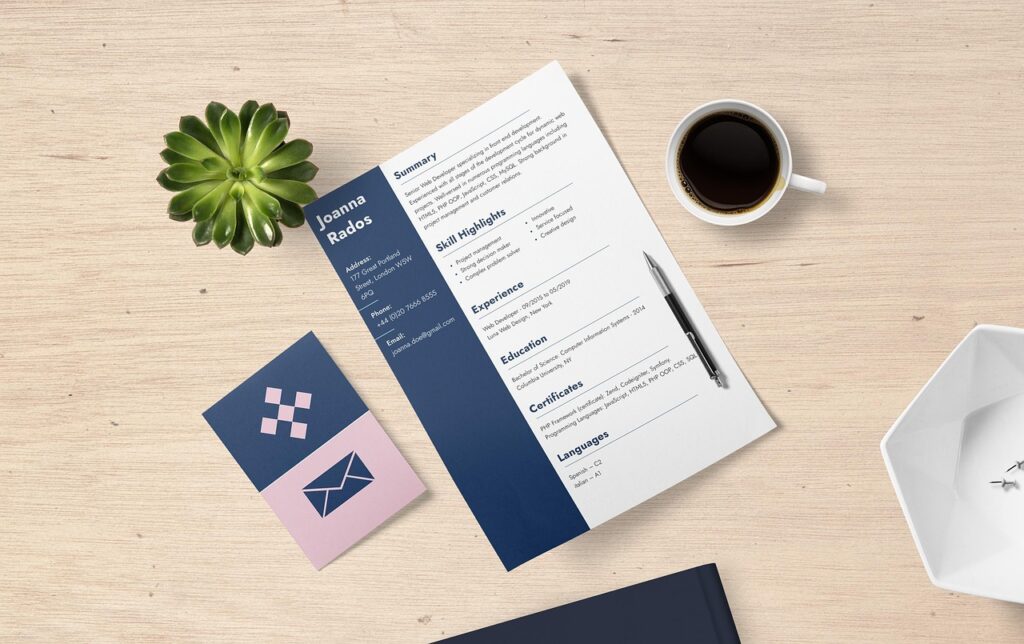How to Email Your CV to Employers: Tips and Examples

Table of Contents
Submitting your CV via email can often feel daunting, especially with the competition in today’s job market. Knowing how to present yourself professionally in both your CV and your email can make all the difference between landing an interview and being overlooked. In this guide, we will explore the best practices for emailing your CV to employers, including tips, examples, and key considerations that will help you stand out.
Understanding the Importance of Emailing Your CV

When applying for a job, the email serves as your initial introduction to a potential employer. It sets the tone for the relationship you hope to cultivate during the hiring process. A well-crafted email not only conveys professionalism but also demonstrates your attention to detail. With many organizations receiving hundreds of applications, a well-structured email can significantly increase your chances of making a strong impression.
Why the Right Email Matters
First Impressions Count: Your email is often the first communication you’ll have with your future employer, making it a crucial part of your application.
Showcases Professionalism: A carefully constructed email reflects your work ethic and dedication to the application process.
Conveys Clarity and Purpose: A clear email helps the employer immediately understand your intent and the value you bring to their team.
Tips for Composing the Perfect Email

1. Use a Professional Email Address
Before even writing your email, ensure your email address is appropriate for a job application. Ideally, it should be a combination of your first and last name (e.g., [email protected]). Avoid unconventional usernames that do not present a professional image.
2. Craft a Clear Subject Line
Your subject line should be concise and informative. Include the position you’re applying for and your name. For example:
- “Application for Marketing Manager – John Doe”
This clarity helps hiring managers quickly see the purpose of your email amidst the many they receive.
3. Open with a Polite Greeting
Begin your email with a professional salutation. If you know the hiring manager’s name, use it:
- “Dear Mr. Smith,”
In the absence of a specific name, a general greeting such as “Dear Hiring Manager,” is appropriate.
4. Write a Compelling Body
The body of your email should be direct and concise. Structure it clearly and include the following elements:
A. Purpose Statement
Start by stating your intention:
- “I am writing to apply for the Marketing Manager position as advertised on your company website.”
B. Brief Introduction
Briefly introduce yourself and your qualifications. This is not a repetition of your CV but rather a teaser to spark interest:
- “With over five years of experience in digital marketing and a proven track record of increasing brand visibility, I believe I would be a valuable addition to your team.”
C. Call to Action
Express your desire for a meeting or interview:
- “I look forward to the opportunity to discuss how my skills align with your company’s needs.”
5. Close Professionally
End your email with a suitable closing statement. Examples include:
- “Thank you for considering my application.”
- “Sincerely,” or “Best regards,” followed by your name.
Including Your CV

1. Attach Your CV
When emailing your CV, always attach it as a PDF. This ensures the formatting remains intact across different devices and email clients. Use a clear and professional file name, such as:
- “John_Doe_CV.pdf”
2. Mention the Attachment in Your Email
In your email body, make sure to indicate that you have attached your CV. For example:
- “Please find attached my CV for your review.”
Examples of Emails When Sending Your CV
To facilitate understanding, here are a couple of sample emails you can adapt for your applications.
Example 1: Direct Application
Subject: Application for Marketing Manager - John Doe
Dear Mr. Smith,
I am writing to apply for the Marketing Manager position as advertised on your company website. With over five years of experience in digital marketing and a proven track record of increasing brand visibility, I believe I would be a valuable addition to your team.
Please find attached my CV for your review. I look forward to the opportunity to discuss how my skills align with your company’s needs.
Thank you for considering my application.
Best regards,
John Doe
[email protected]
(555) 123-4567
Example 2: Referral Application
Subject: Application for Software Engineer - John Doe
Dear Ms. Johnson,
I hope this message finds you well. I was referred to this position by Jane Doe, who spoke highly of your team and company culture. I am eager to bring my background in software development to the Software Engineer position that was recently posted on your careers page.
Attached is my CV for your review. I would appreciate the opportunity to further discuss my application with you.
Thank you for your time and consideration.
Kind regards,
John Doe
[email protected]
(555) 987-6543
Key Considerations
Proofread
Before hitting ‘send’, thoroughly proofread your email. Grammatical errors or typos can detract from your professionalism.
Follow Up
If you don’t hear back within a week or two, consider sending a polite follow-up email. This not only shows your interest but also keeps you on the employer’s radar.
Conclusion
Emailing your CV to employers is a critical step in the job application process. By following the tips and examples provided, you can enhance your professional image and increase your chances of landing that coveted interview. Keep your emails clear, professional, and tailored to the job you’re applying for.
How do you approach sending your CV? Share your thoughts or any personal experiences in the comments below! Also, feel free to check out our additional resources on effective job applications and interview strategies to further bolster your job search.
By mastering the art of emailing your CV professionally, you lay the groundwork for a successful job search. Start applying these tips today, and see the difference in your job application outcomes!



